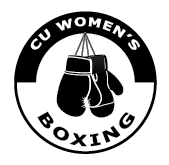You rush into class, quickly weave on a pair of wraps, and take a generous swig of water just in time for the first bag drill of the day.
Warm up? Don’t know her.
Or maybe you take your time setting up your workout space and getting gloved up, then chat with friends while nonchalantly incorporating a few jumping jacks or shadow punches.
We know life can be hectic and making it to class only 2 or 3 minutes late is an accomplishment in and of itself at times. And connecting members socially is an important part of our gym culture that we always encourage. But warm-up is one of the most valuable components of class time and shouldn’t be ignored. Every 60-minute class has a warm-up period built into the first five minutes – more if you come early.
Here are 5 reasons to take advantage:
- Warm Up Your Body
The phrase “warm up” refers to the literal warming of your body as you get loose and engage in light activity. This activity increases the temperature of your muscles and ensures adequate oxygen supply. Incorporating short cardio intervals through jumping jacks, jump rope, or running gently raises your heart rate, preparing it for increased activity. Skipping the warm-up period and immediately elevating your heart rate from its resting state places more strain on your cardiovascular system.
- Improve Mobility
Mobility is more than just stretching; it prepares your body to move independently through a full range of motion. While flexibility can get you into a specific position, mobility will get you out. Mobility teaches your body how to adapt to meet the demands of your workout, significantly decreasing your risk of injury. Put simply, flexibility is passive stretching while mobility is actively guiding your joints through a variety of movements. Strength training alone does not improve mobility; it should be regarded as its own portion of the warm-up. Examples of mobility drills can be found here. Most of these exercises can be performed within the standard 5-minute warm-up next to your bag or mat.
- Check Your Form
“Warm up” can more accurately be described as “movement prep.” Most CUWB warm-ups are programmed to include movements that will appear in that day’s workout. If hooks and weighted 1,2s are on the menu, hook turns and arm circles may be recommended for the individual warm-up. If you haven’t learned a movement (such as uppercuts, slips or rolls) or want specific feedback on an existing skill, warm-up is an ideal time to ask a coach for one-on-one guidance. The warm-up is also an excellent time to slowly work through each movement and ensure you are using correct form before adding speed and power.
- Reduce Injury Risk
Improving mobility and checking your technique can greatly reduce the potential for injury. Most injuries from non-contact boxing are the result of compromised form, such as bent wrists or hyperextension. When your body defaults to correct technique, there is reduced risk of injury. We want every boxer to enjoy a healthy, safe, injury-free workout!
- Prepare Mentally
Maybe you had a tough day at work, or your kids have you running for the hills. It’s easy to come into a workout feeling tired, upset, or on edge. Taking 5 minutes to decompress as you wrap your hands and ease into the movements can help you de-stress and mentally prepare for the workout. This 60 minutes is yours – we want you to enjoy your workout and feel empowered, not overwhelmed.
